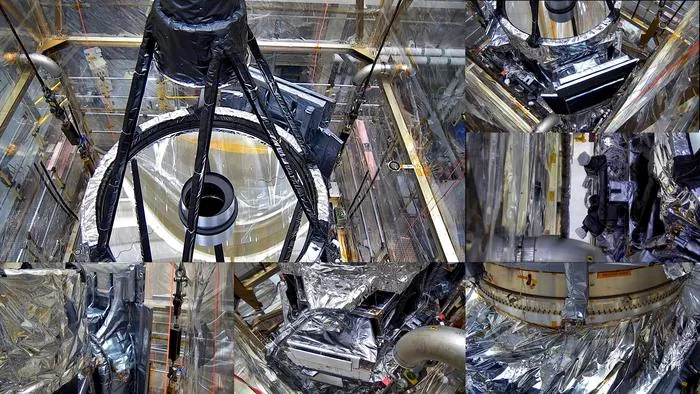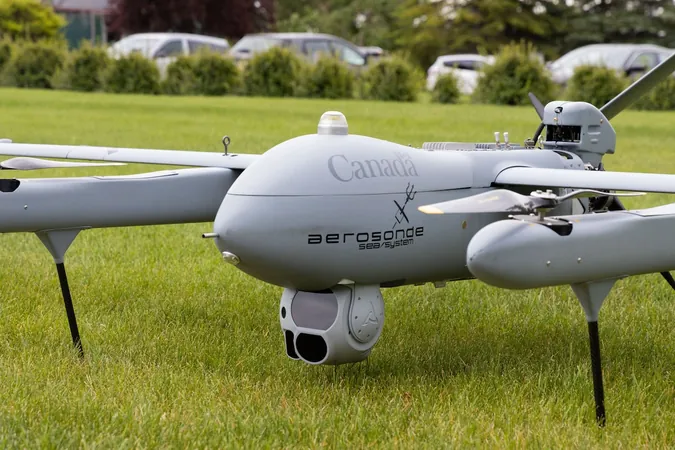
NASA’s Roman Space Telescope Passes Rigorous Vibration Tests – A Giant Leap Towards Space!
2025-06-28
Author: Noah
NASA’s Groundbreaking Roman Space Telescope Takes Major Testing Strides
As spacecraft thunder into the cosmos, they endure seismic forces that can rattle even the sturdiest of structures. This is precisely why rigorous testing is essential before launch! Recently, NASA celebrated a significant milestone as the core components of the Nancy Grace Roman Space Telescope successfully completed a challenging series of shock and vibration tests.
Shock and Vibration Testing: The 'Earthquake' Challenge
These tests took place at NASA’s Goddard Space Flight Center, where the core is currently being assembled. This core, which hosts vital parts like navigation systems and the telescope itself, will eventually be integrated with its outer section, designed to withstand the rigors of space. While the full assembly awaits its turn for comprehensive testing, the sub-components have successfully braved their individual trials.
In an exhilarating analogy, Cory Powell, the lead structural engineer, describes their unique testing process as "like an earthquake, but with key differences." They start by shaking the assembly at low frequencies, gradually ramping up to the higher frequencies that mimic the violent forces during launch. This meticulous process requires intense precision and planning, pushing components beyond the anticipated limits of their design.
Engineering Resilience: Building for the Unexpected
NASA engineers design every system with a buffer, a concept known as "tolerancing." For instance, if a component is expected to reach temperatures of 175°C, engineers select materials that can handle at least 200°C, providing a safety margin. In Roman's case, the assembly faced testing at approximately 125% of the expected stresses encountered during lift-off.
Testing the Waters: Liquid Dynamics in Space
Complicating matters is the fact that the Roman Space Telescope will carry around 295 gallons of propellant for its missions. To simulate this during testing, the engineering team cleverly filled the propellant tanks with deionized water to study how the sloshing liquid might influence structural integrity under vibration.
Next Steps and Future Prospects
After successfully completing the vibration tests, the core components are back in the clean room for detailed inspections, ensuring no hidden flaws could jeopardize the mission. Any minute issues could lead to redesigns, but the team is determined to continue progressing towards the next phase.
Next on the agenda are electronics tests, followed by thermal vacuum tests—the same hurdles the outer components recently navigated. If all goes according to plan, the core and outer sections will be combined in November, with an ambitious launch window slated for May 2027, or even as soon as fall 2026!
A New Era of Cosmic Discovery Awaits!
With each successful test, we edge closer to deploying a monumental space telescope that promises to revolutionize our understanding of the universe. Engineers are holding their breath, hopeful that their meticulous design calculations will pay off. Soon, we might have a brand new tool at our disposal—one that expands our view of the cosmos and enhances our quest for knowledge about distant worlds!









 Brasil (PT)
Brasil (PT)
 Canada (EN)
Canada (EN)
 Chile (ES)
Chile (ES)
 Česko (CS)
Česko (CS)
 대한민국 (KO)
대한민국 (KO)
 España (ES)
España (ES)
 France (FR)
France (FR)
 Hong Kong (EN)
Hong Kong (EN)
 Italia (IT)
Italia (IT)
 日本 (JA)
日本 (JA)
 Magyarország (HU)
Magyarország (HU)
 Norge (NO)
Norge (NO)
 Polska (PL)
Polska (PL)
 Schweiz (DE)
Schweiz (DE)
 Singapore (EN)
Singapore (EN)
 Sverige (SV)
Sverige (SV)
 Suomi (FI)
Suomi (FI)
 Türkiye (TR)
Türkiye (TR)
 الإمارات العربية المتحدة (AR)
الإمارات العربية المتحدة (AR)